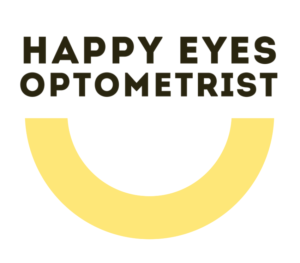Myopic Progression (Worsening Short-Sightedness)
Slow it early. Protect vision for life.
Myopic progression is when a child or teen’s short-sighted prescription gets stronger over time. As the eye grows longer, distance vision becomes blurrier—and higher myopia later in life carries greater risks to eye health. The good news: with early, evidence-based care, progression can be slowed.
Book a Myopia Control Assessment
Who is affected?
- Children & teenagers (most progression occurs during school years)
- Family history of myopia (one or both parents)
- High near-work and screen time, limited outdoor time
- Early onset myopia (younger start often progresses faster)
Why slowing progression matters
As prescriptions climb, the eyeball lengthens. Higher myopia isn’t just stronger glasses—it’s linked to increased lifetime risks of:
- Retinal detachment
- Myopic maculopathy / degeneration
- Glaucoma
- Earlier cataract
Starting early helps keep long-term risk lower.
How Happy Eyes manages myopic progression
Tailored, evidence-based options
- Orthokeratology (Ortho-K) night lenses
Custom-designed using our corneal topographer to fit each child’s eyes. Clear daytime vision without daytime lenses and a proven option to help slow myopia progression. - Soft myopia-control contact lenses
Daily or reusable designs created specifically to reduce eye growth while correcting vision. - Myopia-control spectacle lenses
Specialised lens designs that help slow progression for children who prefer glasses. - Low-dose atropine therapy
Nightly eye drops (when suitable) used alongside regular monitoring. - Lifestyle guidance
Outdoor time (aim ~2 hours/day), smart screen habits (20-20-20 rule), good reading distance/lighting.
We’ll recommend the right mix for your child based on age, prescription, corneal shape, lifestyle, and family history.
Our monitoring & follow-up
- Regular prescription reviews to track change
- Corneal topography to guide and refine Ortho-K or contact lens designs
- Visual function & comfort checks to keep wear safe and sustainable
- Trend comparisons year-on-year so you can see progress over time
What to expect at your visit
- Comprehensive eye test (vision, prescription, binocular function)
- Corneal topography for contact lens/Ortho-K suitability
- Risk discussion (family history, lifestyle, onset age)
- Personalised plan (choose the best control option for your child)
- Follow-up schedule (close early reviews, then regular monitoring)
Book a Myopia Control Assessment
FAQs
Is myopia progression normal?
Progression is common during growth years, but it can be slowed with the right strategy.
Is Ortho-K safe for kids?
Yes—when professionally fitted, cleaned correctly, and reviewed regularly. We train both child and parent.
Will my child still need glasses?
Most activities are clear with the chosen option, but some children use a backup pair for specific tasks.
How long does treatment last?
Typically through the key growth years. We adjust as your child’s eyes and lifestyle change.
Take action early
The fastest changes often happen in primary and early secondary school. Starting a plan now can make a big difference to long-term eye health.
